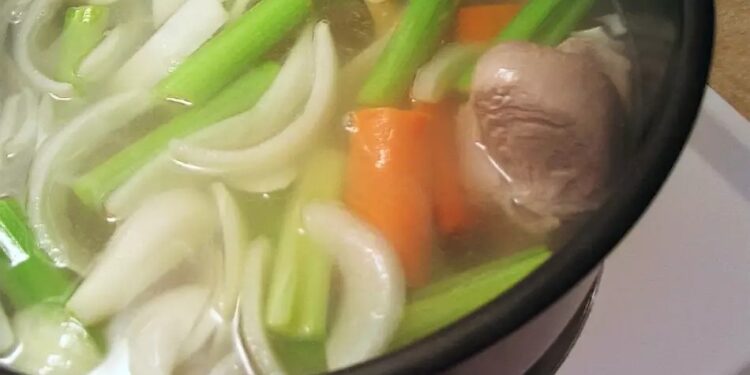Remouillage is a super-thrifty stock made from the already boiled-down elements of a first stock, added to fresh vegetables and simmered again to make a flavourful soup base

When I worked at River Cottage, we’d instinctively make remouillage, or a second stock, from bones that had already been boiled for stock. The rich stock ingredients had heaps of flavour left in them even after being cooked and strained, so we’d refill the pot with water and make a second, weaker stock to use in soups, for boiling greens or to make boulangère potatoes (Recipe). We’d also make fresh bone stock in remouillage rather than water, creating a very potent jus.
Remouillage, or second stock
Remouillage is a French cooking term that translates to “rewetting”. Used stock bones are returned to the pot, often in the company of fresh vegetables, then covered with water and simmered until tasty, so making a second, extra-thrifty stock.
To create the best flavour and extract the most nutrition, including the collagen and micronutrients from bones, a stock should be simmered for as long as possible: ideally, the chicken should be cooked for at least four hours and the beef for eight. The most energy-efficient way to do this is in a slow cooker; you can also make stock in a pressure cooker, and in doing so cut the cooking time by two-thirds. However, the intense boil created in a pressure cooker will create a cloudy and potentially more bitter stock than a slowly simmered one, though in my experience it’s still fine to use.
Remouillage is, of course, weaker than stock made from scratch, but it’s still surprisingly full of flavour. It can be combined with a first stock, or reduced to your desired flavour and viscosity.
Used stock bones (eg, chicken carcass, beef marrow bones, lamb bones)
Stock vegetables, all roughly chopped (eg, carrot, celery, celeriac, leek, onion, parsley, lovage, garlic, mushrooms, bay leaves, etc), to taste
Put the stock bones in a suitably sized pot (or slow cooker or pressure cooker) and add an equal quantity of fresh stock vegetables or saved peelings and scraps. Crush everything down with a rolling pin, then add enough water just to cover. Bring to a boil, then reduce to a trembling simmer and cook for as long as possible, and for at least two hours. Take out a spoonful, and add a pinch of salt to bring out the flavour, and taste.
If using a pressure cooker, cook for at least an hour following the instructions. The best option – to make the best remouillage and to save energy – is to make it in a slow cooker and cook it for at least eight hours.
Strain the stock and, if there is still more flavour and minerals in the bones, consider using them to make a second remouillage. If, however, the strained stock is already on the weak side, simmer for longer or reduce to your liking.
Source: The Guardian









Recent Comments